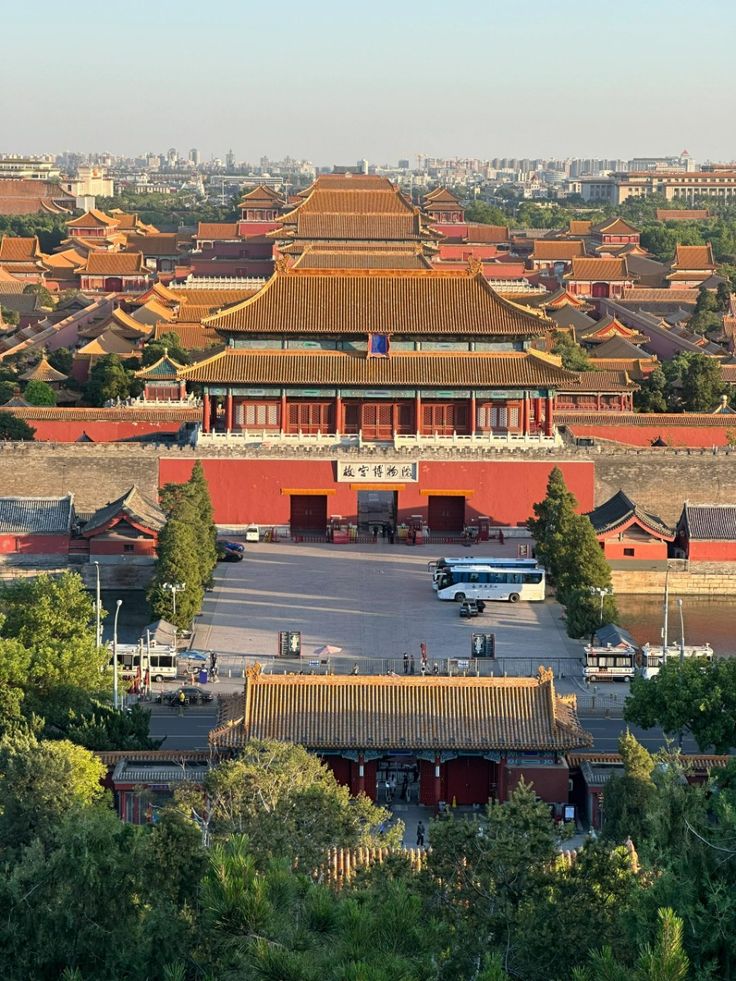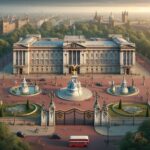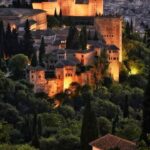The Forbidden City, China: A Timeless Treasure of Imperial History
Located in the heart of Beijing, The Forbidden City stands as a monumental symbol of Chinese imperial history and culture. Once the seat of emperors from the Ming to the Qing Dynasty, it is the largest ancient palace in the world, housing centuries of royal treasures, secrets, and architectural grandeur. Today, it is known as the Palace Museum, one of China’s most visited cultural sites, attracting millions of tourists each year. With its rich history, intricate design, and symbolic significance, the Forbidden City continues to captivate those who visit and study its impressive legacy.
History
Construction of the Forbidden City began in 1406 during the reign of Emperor Yongle of the Ming Dynasty and took over 14 years to complete, finishing in 1420. It was designed to serve as the imperial palace, the political center of the Chinese empire, and the residence of the emperor and his court. The Forbidden City is called so because it was a restricted area, with only the emperor, his family, and selected officials allowed to enter. Common citizens were forbidden from entering, making it a literal “forbidden” place.
It remained the seat of imperial power for nearly 500 years, spanning both the Ming and Qing Dynasties. It housed 24 emperors and witnessed several major events in Chinese history. After the fall of the Qing Dynasty in 1912, the Forbidden City became a museum, preserving countless works of art, artifacts, and royal relics for future generations.
Architectural Design and Features
It is a masterpiece of Chinese architecture, designed to reflect the power and authority of the emperor, while also embodying the cosmic order of Chinese philosophy. The city covers an area of around 180 acres and is enclosed by a massive defensive wall and a wide moat. The palace complex consists of over 980 buildings, with more than 8,700 rooms. The design follows principles rooted in traditional Chinese cosmology, including the yin-yang and feng shui philosophies.
Here are some of the most notable features:
- The Meridian Gate (Wu Men): The main entrance to the Forbidden City is the Meridian Gate, which is the largest and most imposing structure in the entire complex. This gate was the official entrance for the emperor, and it marks the boundary between the palace and the outside world. Only the emperor could pass through this gate with his entourage.
- The Hall of Supreme Harmony: The Hall of Supreme Harmony is the largest and most important hall in the Forbidden City, used for major ceremonial events such as the emperor’s coronation and imperial weddings. The hall’s grand architecture, with its gold-plated roof and intricate woodwork, highlights the emperor’s supreme power.
- The Imperial Garden: It also houses the Imperial Garden, a peaceful and beautiful garden where the emperor and his family could retreat from the stresses of court life. The garden features classic Chinese elements, including rock formations, pavilions, and perfectly landscaped trees.
- The Inner Court and Outer Court: It is divided into two main sections: the Outer Court and the Inner Court. The Outer Court housed the imperial administrative offices and was used for ceremonial events, while the Inner Court served as the emperor’s private residence and housed his family and concubines.
- The Roofs and Colors: The roofs of the buildings in the Forbidden City are covered in yellow tiles, a color symbolizing the emperor’s status as the son of heaven. The roofs are also adorned with mythical creatures such as dragons, which represent the emperor’s power and divine right to rule.
Significance
It holds immense cultural, political, and symbolic significance in Chinese history. It was not only the residence of the emperor but also the center of Chinese power and governance for nearly five centuries. The palace complex was designed to represent the emperor’s role as the mediator between heaven and earth, with its layout symbolizing the order of the universe.
Key aspects of its significance include:
- Symbol of Imperial Power: It was a physical manifestation of the emperor’s divine right to rule. Its grandeur and design served to reinforce the emperor’s role as the “Son of Heaven,” a title that granted him authority over both the earthly and divine realms.
- A Reflection of Chinese Cosmology: The design of the Forbidden City reflects Chinese cosmological principles, where the emperor’s palace is positioned at the center of the world. The alignment of buildings, colors, and design elements all point to the emperor’s central role in maintaining harmony and order.
- Cultural Heritage: It is a repository of China’s rich cultural heritage, containing artifacts, calligraphy, paintings, and ceramic collections that span several centuries. The Palace Museum within the Forbidden City houses over a million artifacts, many of which are of extraordinary historical and artistic value.
- The Palace as a Microcosm of Chinese Society: It served as a microcosm of Chinese society, with the emperor at the top, followed by his family, officials, and servants. The intricate hierarchy and division of space within the palace complex mirrored the social structure of the entire empire.
Key Facts
- Size and Scale: It covers 180 acres and is made up of 980 buildings, making it the largest palace complex in the world. It is also the best-preserved example of traditional Chinese palatial architecture.
- Architecture: The palace complex is designed with 9999.5 rooms, reflecting the belief that the emperor, as the “Son of Heaven,” was the ruler of a near-perfect world. The number nine, symbolizing eternity, is considered auspicious in Chinese culture.
- The Palace Museum: Today, It is home to the Palace Museum, which was established in 1925. The museum houses over one million pieces of historical and artistic significance, including ancient ceramics, royal robes, and rare manuscripts.
- The Moat: It is surrounded by a 6-meter-wide moat, which served as both a protective barrier and a symbol of the division between the emperor’s world and the outside world.
- World Heritage Site: In 1987, It was designated a UNESCO World Heritage Site, recognizing its outstanding universal value as a cultural and architectural treasure.
- The Empress Dowager Cixi: One of the most famous figures in the history of the Forbidden City is Empress Dowager Cixi, who effectively ruled China for nearly half a century. She lived in the Forbidden City and exerted significant influence over imperial politics.
- The Palace Layout: It is divided into an Outer Court (for ceremonial functions) and an Inner Court (where the emperor’s family and personal affairs took place). This division reflects the structure of Chinese society, with the public and private worlds kept separate.
- Visitors: Each year, millions of tourists visit the Forbidden City to explore its vast collection of art, learn about China’s imperial history, and appreciate its architectural beauty.
Impact on Society and Tourism
It has had a lasting impact on Chinese culture and global history. As the center of imperial rule for centuries, it played a central role in shaping Chinese politics, art, and architecture. Today, it remains a symbol of the country’s rich cultural heritage, attracting millions of visitors from around the world.
The Palace Museum continues to preserve and showcase China’s vast history and culture, making the Forbidden City not just a tourist destination, but also a significant educational resource. It has influenced the design of many palatial structures across East Asia and remains a key cultural landmark.
Conclusion: A Legacy of Imperial Grandeur
It stands as one of the greatest architectural and cultural achievements in Chinese history. Its rich history, stunning architecture, and profound significance make it a timeless treasure, offering a glimpse into the grandeur and complexity of imperial China. As the heart of Chinese power for over 500 years, the Forbidden City remains a symbol of the enduring legacy of the Chinese monarchy and its cultural heritage.










